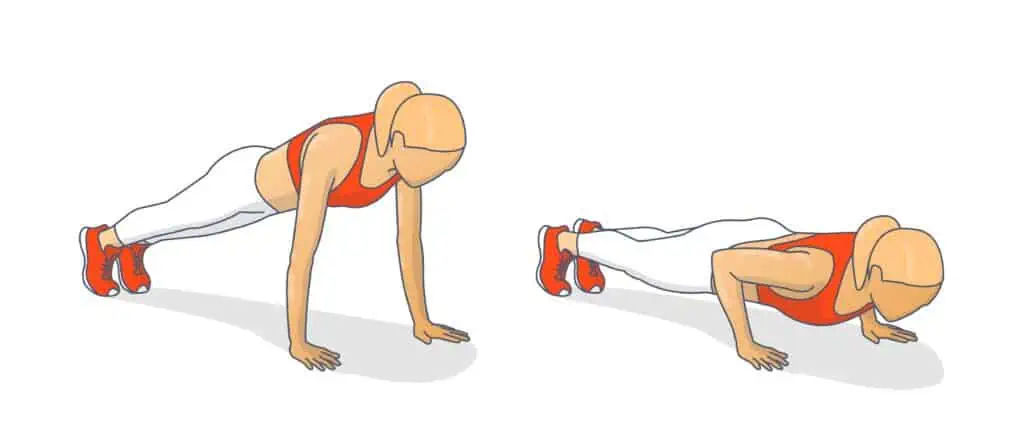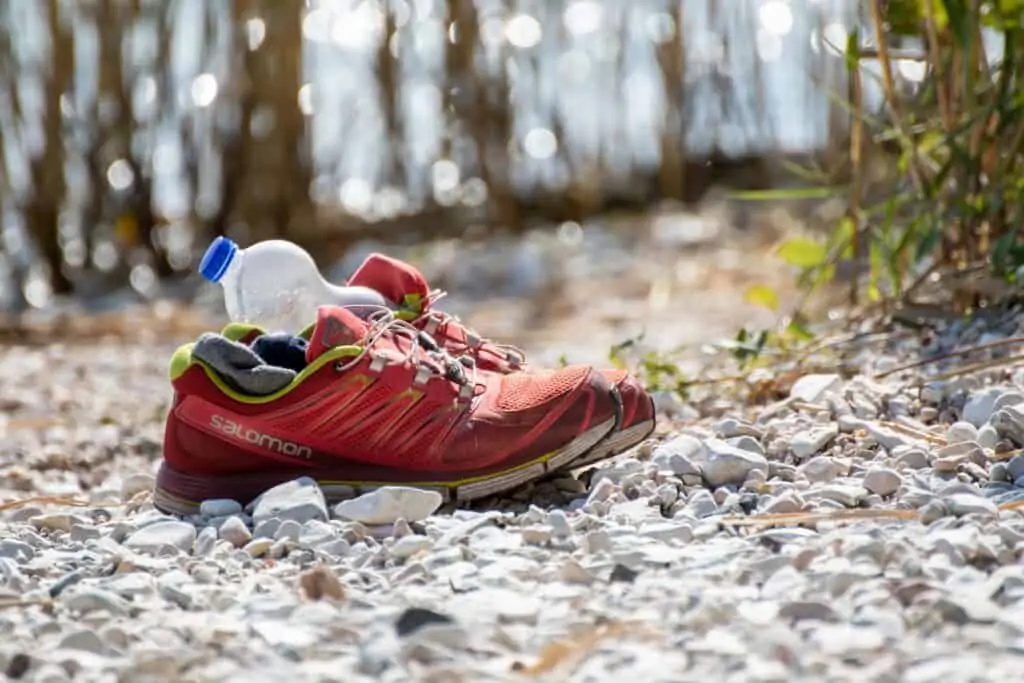I don’t think a guy can go more than a couple of months without being asked how many pushups he can do. Especially if you are a fat guy (like me) and work with a super fit guy (like Dave). I guess I’m just easy pickings to make himself look better.
Freaking Dave.
I guess he thinks that fat people can’t even do pushups. And in my case…he’s not totally wrong. I can’t do many pushups.
However, it’s not because of my weight and there are a lot of big guys that can do pushups. I just don’t care about pushups and don’t do them very often.
But people still ask.
What they don’t know is that I don’t mind answering questions about my weight because I’m completely happy with how I look. Since I can talk pretty unfettered about the issues of obesity, let’s take a look at how pushups are a bit different (more challenging) for fat people and how you can mitigate some of the problems if you’re in the fat camp (don’t actually go to fat camp).
What Does It Take to Do a Pushup?
Pushups are primarily an upper-body exercise because they involve using your arms to push down on the ground and lift up the rest of your body. That’s why my high school gym teacher used to say they should really be called push-downs since you aren’t really pushing up on anything. I guess he didn’t really think about the fact that we were pushing our body’s up (gym teacher logic).

So, to successfully do a pushup, the only real requirement is being able to support about three-quarters of your total body weight. Obviously, the more weight a person has, the more difficult it would be to do a pushup.
And this isn’t a trite thing like. Getting heavier adds a significant amount of weight.
I think of it in terms of a bench press. Let’s say that a 140lb dude can do 50 pushups. How many reps of bench press can he do with 210 lbs? (the rough weight that a 280lb guy is pushing when doing pushups).
But that doesn’t mean it’s impossible. The sheer weight being moved is just one of the issues that make the movement more difficult.
So Fat People Can Do Pushups?
The answer is absolutely 100% yes, fat people are physically capable of doing pushups, both from their knees or their toes.
While the movement is more difficult, the only situation where a person would be physically unable to do so would be if they had an issue with their biceps, shoulders, or another part of their body that made it untenable.
If you are grossly obese (gross in terms of mass, not like “icky”) then it is also likely that your body size/shape will make pushups either undoable or totally ineffective. My dad is fat enough that his “pushups” would just be him laying on his belly and resting his hand on the ground. He definitely doesn’t have the strength to do a single pushup but the size of his arms coupled with his backfat means he wouldn’t have the range of motion anyway.
As mentioned above, doing a pushup is harder for fat people but certainly not impossible. It all depends on how much weight their arms can lift. I have friends who are medically classified as underweight and can’t do pushups because they don’t have enough upper body strength. Of course, they’re all computer programmers who make enough money that they can pay someone to do pushups for them but that’s beside the point!
But, are they optimum?
So here’s the main problem if you’re fat and are thinking about pushups…pushups are not optimum for…pretty much anyway. If you want to lose weight, choose some sort of low-intensity steady-state cardio (a treadmill, for example). If you want to lose weight and gain some muscle, do some sort of progressive overload weight training.
But if you want to do more pushups…then I guess focusing on pushups would be helpful. At least then you can tell Dave at work to shut up.
How Can Fat People with Limited Upper Body Strength Do Pushups?
Naturally, the easiest way to solve the problem of limited upper body strength is to increase your levels of upper body strength
I know that it’s not an immediate solution but lifting weights is a great way to build strength.
Bench pressing is fairly analogous to pushups and allows you to set the weight wherever you want (making it easier and reducing the risk of injury).
If you can’t do 15 reps at 100 pounds, that’s fine. When I started weightlifting, I was bench pressing 45 pounds (just the bar with no weight) but I did sets of 30 reps instead of 10. If you can’t do a few reps of high weight, do a lot of reps on a low weight. Just starting to recruit your muscle fibers will do more than anything.

If you’d rather not wait to develop extra muscle in your arms (I gotta maintain my smooth arms, ya know?), wall pushups are a great alternative to traditional ones. All you have to do is stand with your feet about two feet or three feet away, put your hands on the wall, and then push against the wall as you would against the floor for a normal pushup. I did hundreds of these when rehabbing a tricep tear and highly recommend them.
Another option is to do incline pushups. These are the medium between the standard and wall versions of the exercise. It’s the same pose as the regular pushup position but your hands are placed on stairs, a bench, or something similar. This reduces the strain on your body and will allow you to do the exercise by supporting a lower percentage of your body weight.
How to Avoid Injury While Doing Pushups
Pushups can be a great exercise but if you do them incorrectly, there’s also the chance that you could get an injury. If you haven’t done pushups in a while, here are a few common mistakes to avoid that can help protect you from injury.
One of the most common rookie mistakes is having your elbows flared out too far. This is how I did them in school growing up because I was more of a lower-body strength kid. This position made it easier and more comfortable for me but also led to a lot of shoulder pain.
Another common error is the opposite, having your elbows tucked in. This leads to pain in the front part of your shoulder. To avoid injuries, you’ll want your elbows to be at a 45-degree angle from your body or as close to that as you can get. Having them too close or too far away will put too much stress on your shoulders and wrists.
Another common mistake is letting your hips get too low and having your knees almost touching the ground. That was another bad habit of mine and it led to a lot of wrist pain growing up because it puts too much pressure on them. I don’t do a lot of pushups now but when I do, it hurts less than it used to.
Finally, you’ll want to keep your head in a neutral position. A lot of people look down or look up while doing pushups and that can lead to a sore neck. You’ll want to keep it in the same position relative to your chest that you would while standing or sitting up.
If you’re not fat, it’s more likely that pushups will lead to overuse injuries before anything else.
The amount of fatigue you accumulate on your elbows and shoulders by doing high-rep pushups is so deleterious to your body that it outweighs the modicum of stimulus that your muscles are getting.
Recap and Final Thoughts

To sum up, yes, fat people can still do pushups! While some people may have to do modified pushups when starting out but they can still be done. They’re a great exercise to build upper body strength. Well, they do build some upper body strength and they do recruit lots of other muscle groups which is helpful!
If you’ve tried the modified techniques and still can’t do a pushup, that’s okay, too! Just keep working on increasing your upper body strength in other ways and you’ll get there in no time. Even if you don’t, it doesn’t really matter. Your self-worth shouldn’t be determined by whether or not you can do a single exercise.
Whether you can do zero pushups or 50, I wish you the best of luck on your fitness journey and I hope that this article has helped you out. Have fun and stay safe out there!








